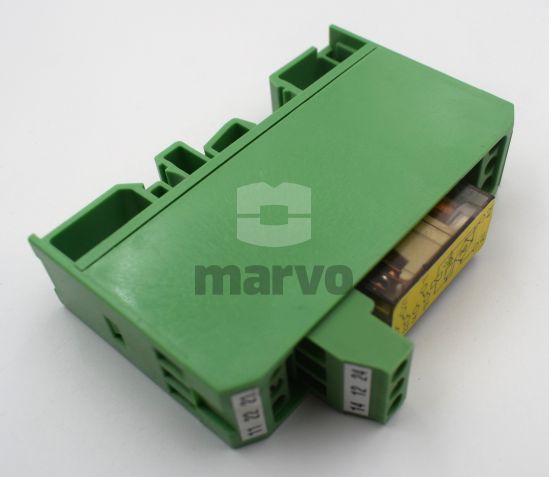The Phoenix Contact PSR-SCF- 24UC/URM/2X21 is a versatile and reliable extension module designed to enhance the functionality of safety-related systems. This module is equipped with two potential-free changeover contacts, offering flexibility for various control tasks within industrial automation environments. Its compact design, with a width of just 17.5 mm, allows for efficient use of space on DIN rails, making it an ideal choice for installations where space is at a premium.
Crafted for durability and consistent performance, the module operates within an input voltage range of 0.85 to 1.1 times the nominal voltage, with a typical input current of 30 mA at the nominal voltage. It boasts a swift response and release time of approximately 10 ms, ensuring timely operations in critical applications.
The output contacts are made from silver nickel (AgNi), which is known for its excellent conductivity and resistance to wear, contributing to the module's longevity. These contacts can handle a maximum switching voltage of 250 V AC/DC and a minimum switching voltage of 15 V AC/DC, with limiting continuous currents of 5 A for normally open (N/O) contacts and 3.5 A for normally closed (N/C) contacts.
Safety is a paramount concern in the design of the PSR-SCF- 24UC/URM/2X21, which features electromechanically forcibly guided, dust-proof relays. The module complies with stringent standards and regulations, including DIN EN 50178/VDE 0160 and EN 50205, ensuring its suitability for a wide range of safety applications.
The module is designed to operate within an ambient temperature range of -20 °C to 50 °C, making it robust enough to withstand challenging industrial environments. Additionally, it is rated for basic insulation with a rated surge voltage of 4 kV, providing an extra layer of protection against voltage spikes.
Overall, the Phoenix Contact PSR-SCF- 24UC/URM/2X21 is a high-quality, functional module that offers reliability and safety for industrial automation systems, making it a valuable addition to any control and safety circuitry.




 2 ready to ship
2 ready to ship




